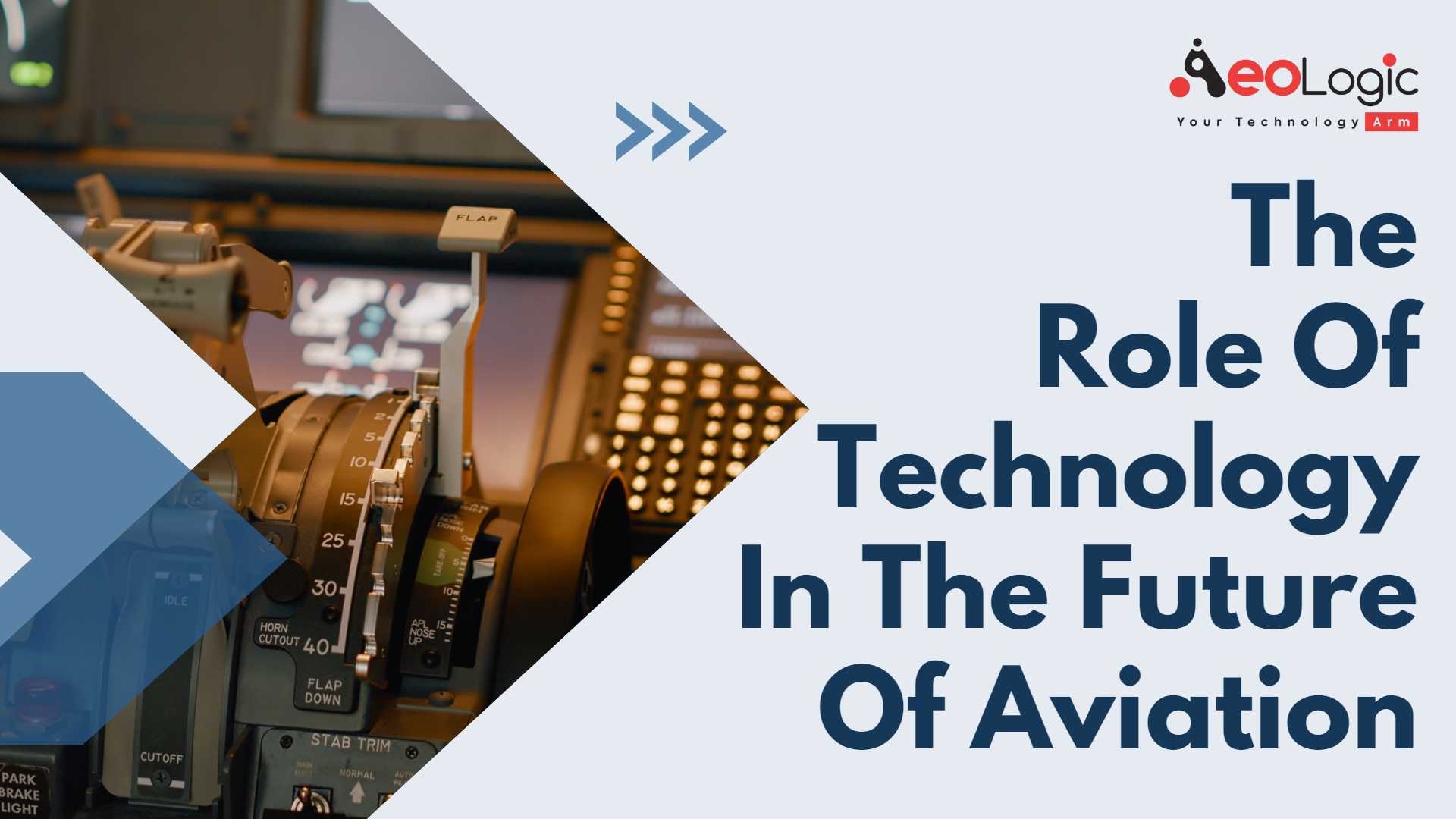As technology advances at an unprecedented pace, the aviation industry is poised to undergo a transformation. The integration of cutting-edge technologies into aircraft design, air traffic control systems, and airport operations will enhance the safety, efficiency, and sustainability of air travel. In this article, we will explore the role of technology in the future of aviation and its impact on the industry.
The Top 10 Technologies Shaping the Future of Aviation
Technology is transforming every aspect of the aviation industry, from the aircraft themselves to the air traffic control systems and airport operations. The integration of advanced technologies has the potential to revolutionize the way we travel by air. We will take a closer look at the top 10 technologies that are shaping the future of aviation and explore their impact on the industry.
- Electric and Hybrid Aircraft
- Autonomous Flight Systems
- Advanced Materials and Manufacturing Techniques
- Big Data and Analytics
- Augmented and Virtual Reality
- Supersonic Travel
- Blockchain Technology
- 3D Printing
- IoT
- Sustainable Aviation Fuels
1. Electric and Hybrid Aircraft: The Future of Sustainable Aviation
Electric and hybrid aircraft are poised to transform the aviation industry by reducing carbon emissions, improving fuel efficiency, and lowering operational costs. The use of electric and hybrid propulsion systems eliminates the need for fossil fuels and reduces the industry’s carbon footprint. Airbus, Boeing, and other manufacturers are investing heavily in the development of electric and hybrid aircraft, with prototypes already in flight testing.
2. Autonomous Flight Systems: The Future of Safe and Efficient Air Travel
Autonomous flight systems are another technology that is poised to revolutionize the aviation industry. By integrating artificial intelligence and machine learning into aircraft, pilots can focus on higher-level tasks while the aircraft itself handles takeoff, cruise, and landing. Autonomous flight systems can improve flight safety by reducing the risk of human error and increasing the efficiency of flight operations.
Also Read: The Role of Technology in the Future of Aviation
3. Advanced Materials and Manufacturing Techniques
The use of advanced materials and manufacturing techniques can significantly reduce the weight of aircraft, leading to improved fuel efficiency and reduced emissions. Carbon fiber composites, for example, are lighter and stronger than traditional materials, allowing aircraft to fly farther on less fuel. Advanced manufacturing techniques such as 3D printing also offer significant benefits in terms of cost, speed, and flexibility.
4. Big Data and Analytics: The Future of Data-Driven Decision Making
The aviation industry generates vast amounts of data every day, from flight plans and weather reports to passenger preferences and airport operations. Big data and analytics can help airlines and airports make data-driven decisions that improve efficiency, reduce costs, and enhance the passenger experience. By leveraging advanced analytics tools, airlines can optimize flight schedules, reduce delays, and improve on-time performance.
5. Augmented and Virtual Reality
Augmented and virtual reality (AR/VR) technologies are poised to revolutionize the future of aviation. In the aviation industry, AR/VR can be used for a variety of purposes, including training, maintenance, and operations. With AR, mechanics can access detailed information about aircraft components by simply pointing their device at the object. Pilots can use AR to overlay real-time flight data onto their view, allowing for enhanced situational awareness.
As these technologies continue to improve, they have the potential to greatly enhance safety, efficiency, and effectiveness within the aviation industry.
6. Supersonic Travel
Supersonic travel is another innovation that is set to revolutionize air travel. With supersonic travel, passengers can travel at speeds up to 2,000 miles per hour, reducing travel time significantly. The technology behind supersonic travel involves the use of advanced materials and engines that can withstand the extreme heat generated by flying at such high speeds.
7. Blockchain Technology
Blockchain technology is emerging as a game-changer for the aviation industry. With its ability to create secure and transparent records that can be shared across a decentralized network, blockchain has the potential to transform a wide range of aviation operations, including ticketing, baggage handling, maintenance, and safety. For example, airlines could use blockchain to create a single, immutable record of a passenger’s travel history, which could be accessed and verified by any relevant party.
Also Read: Use of Technology in Merging Virtual and Real World
As the aviation industry continues to evolve, blockchain technology is likely to play an increasingly important role in creating a more efficient, secure, and customer-friendly aviation ecosystem.
8. 3D Printing
3D printing, also known as additive manufacturing, has significant potential to transform the future of aviation. With this technology, complex parts and components can be created quickly and efficiently, often at a lower cost than traditional manufacturing methods. 3D printing can also enable the creation of highly customized parts that can be tailored to specific aircraft models, reducing the need for costly modifications.
It can allow for on-demand manufacturing, reducing the need for large inventories of spare parts. This technology has already been used to create parts for aircraft engines and cabin interiors, and it is expected to become more prevalent in the aviation industry in the future.
9. Internet of Things (IoT)
The Internet of Things (IoT) is set to play an increasingly important role in the future of aviation. By connecting aircraft and ground systems to a network of sensors and devices, airlines can gain real-time insights into the performance and condition of their assets. This can enable proactive maintenance and repair, reducing downtime and improving safety.
IoT technology can be used to enhance the passenger experience, providing personalized services and information based on passenger preferences and behavior. For example, airlines could use IoT data to offer targeted promotions or recommend relevant products and services to passengers. As the aviation industry becomes more connected, IoT is likely to become a key enabler of efficiency, safety, and customer satisfaction.
10. Sustainable Aviation Fuels
Sustainable aviation fuels (SAF) are expected to play an increasingly important role in the future of aviation. These fuels are produced from renewable sources, such as agricultural waste, and have the potential to reduce greenhouse gas emissions by up to 80% compared to traditional jet fuels.
With continued innovation and investment, SAF has the potential to significantly reduce the aviation industry’s carbon footprint and contribute to a more sustainable future.
Also Read: Role of Metaverse Technology for Business Success
Conclusion
Technology will have a transformative impact on the aviation industry. AR/VR, blockchain, 3D printing, and IoT are some of the emerging technologies that can enhance safety, efficiency, and sustainability. As these technologies evolve, they will be increasingly integrated into aviation operations, creating a more connected and data-driven ecosystem. Although challenges remain, such as ensuring the security and reliability of these technologies, the benefits are significant. Technology will play a crucial role in shaping the future of aviation, enabling the industry to adapt to changing customer needs, environmental pressures, and technological advances.
Keeping your fulfillment process steady is made easier with the use of technology for effective business solutions. Get in touch with Aeologic Technologies right away to see how it can benefit your company.
Also Read: 10 Ways to Use Artificial Intelligence to Improve Business Processes
Related Blogs:
- How AI/ML Can Change the Public Transportation Industry
- Transforming Business With Digital Technology in the Oil Palm Industry in India
- Importance of Digital Asset Management in the Retail Industry
- How AI is Transforming the Agriculture Industry
- 10 Ways to Use Artificial Intelligence to Improve Business Processes
- The Future of IoT Technology in Convenience Stores
- Building Manufacturing Resilience Through AI and ML

I’m Deepika Pandey, an SEO strategist and content writer with 6+ years of experience. I create SEO-friendly content that drives traffic and engages readers. I combine data insights with creativity to help businesses grow their online presence effectively.






